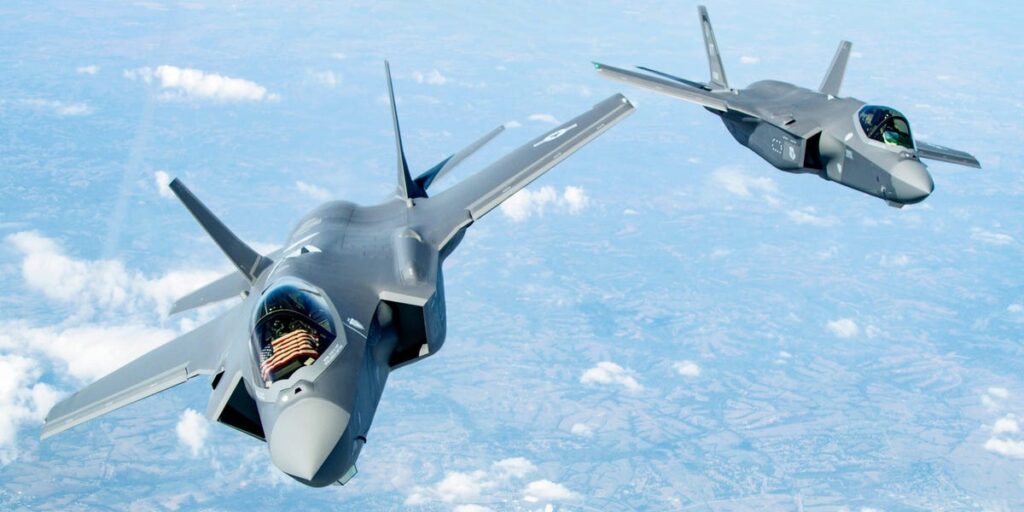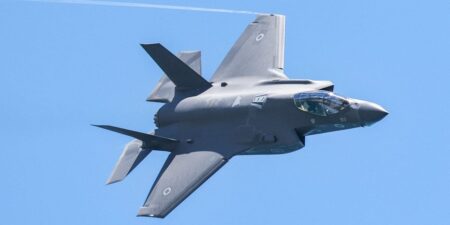- The Air Force and Space Force must grow over the next two decades to counter emerging threats.
- China’s rapid military advancements pose a significant challenge.
- The US is boosting cyber defenses and AI, with “machine speed” being necessary for some decisions.
Winning wars 25 years from now will hinge on achieving an edge in artificial intelligence and the ability to make certain decisions at inhuman speeds, the US Air Force’s top civilian official said Monday.
Future war will be “highly automated, highly autonomous, action at long range, precision,” and space will be a “decisive theater,” Air Force Secretary Frank Kendall said. “Response times to bring effects to bear are very short.”
Advances in technology, including the proliferation of sensor technology and machine learning, have led to the ability to execute complex kill chains on faster timelines. Maintaining a competitive edge demands change and further innovation.
“We’re going to be in a world,” Kendall said, “where decisions will not be made at human speed; they’re going to be made at machine speed.” Meeting that challenge will mean transforming the Department of the Air Force through AI to shield troops from a range of threats and prepare for higher-level combat.
Kendall’s remarks on Monday at a Center for Strategic and International Studies event looking at Air Force plans for the future align with Air Force leadership visions for 2050.
A December 2024 report titled The Department of the Air Force in 2050 says that the “areas of conflict that move at speeds vastly exceeding human decision time constants, such as cyber warfare and electronic warfare, are likely to be dominated by AI technologies that assess events happening at unimaginably fast speeds and unimaginably small dimensions.”
“These technologies will be used to make crucial decisions with no possibility of human intervention,” the report says. “Victory or defeat in the air or in space at the human scale is likely to be determined by which combatant has fielded the most advanced AI technology in the areas most crucial to achieving victory.”
The Air Force secretary has previously said that he doesn’t think people who say that AI is “going to determine who’s the winner in the next battlefield” are “all that far off.”
What Air Force leadership says is needed for future fights
“China is doing everything it can to exploit the opportunities that emerging technologies are providing to field forces designed to defeat the United States in the Western Pacific, especially in space and in the air,” the Air Force plans for 2050 say.
The Air Force and Space Force have expressed concern over the pace at which China has been developing military space capabilities, including a network of hundreds of military satellites that may assist in targeting troops, among other challenges.
“The joint force will not be able to go anywhere and do anything unless we can protect it from targetings in space,” Kendall explained Monday.
A more powerful Space Force is a must to combat China’s growing abilities, Kendall said. “We have to go from having a merchant marine [force] to essentially having a Navy,” the secretary said, comparing where the force is today and where it needs to eventually be to civilian cargo mariners and armed naval forces.
The Space Force was established during the first Trump administration and remains in the early stages of development. But strengthening US technological capabilities doesn’t stop there.
The US needs to boost defense against cyber-attacks while also increasing offensive capabilities, Kendall said, adding that he expects more developments on both fronts this year. That sentiment comes on the heels of a recent alarming hack of US telecommunications systems and the US treasury, allegedly by Chinese hackers.
Autonomous vehicles and aircraft are also expected to become more prolific and play a greater role in future wars. “The only open questions about autonomy are how fast it will mature and what form it will take,” the Air Force said in its report on 2050.
“The direction is quite clear at this point,” it said. “By 2050, we can reasonably expect autonomous vehicle operation to be the norm, in all domains.”
The Air Force has already begun experimenting with AI-assisted flight navigation for some of its jets in anticipation of a space attack that could cripple satellite-based GPS communication. It is also developing uncrewed collaborative combat aircraft and experimenting with AI-piloted fighter aircraft, key developments amid Beijing’s investment in its own air forces, which is gradually eroding American air supremacy.
Autonomous military platforms and other variants of AI rely so heavily on chip technology, which the Biden Administration has put new restrictions on.
“To enhance US national security and economic strength, it is essential that we do not offshore this critical technology and that the world’s AI runs on American rails,” read the White House announcement.
But one of the hardest challenges in the decades to come will be how American troops and machines work together at war, Kendall said. “We’re gonna have to figure out how to manage this in a way which is cost effective, which is consistent with our values, which is militarily competitive.”
And, he said, “I think that’s gonna be a tough problem to resolve.”
Read the full article here
















